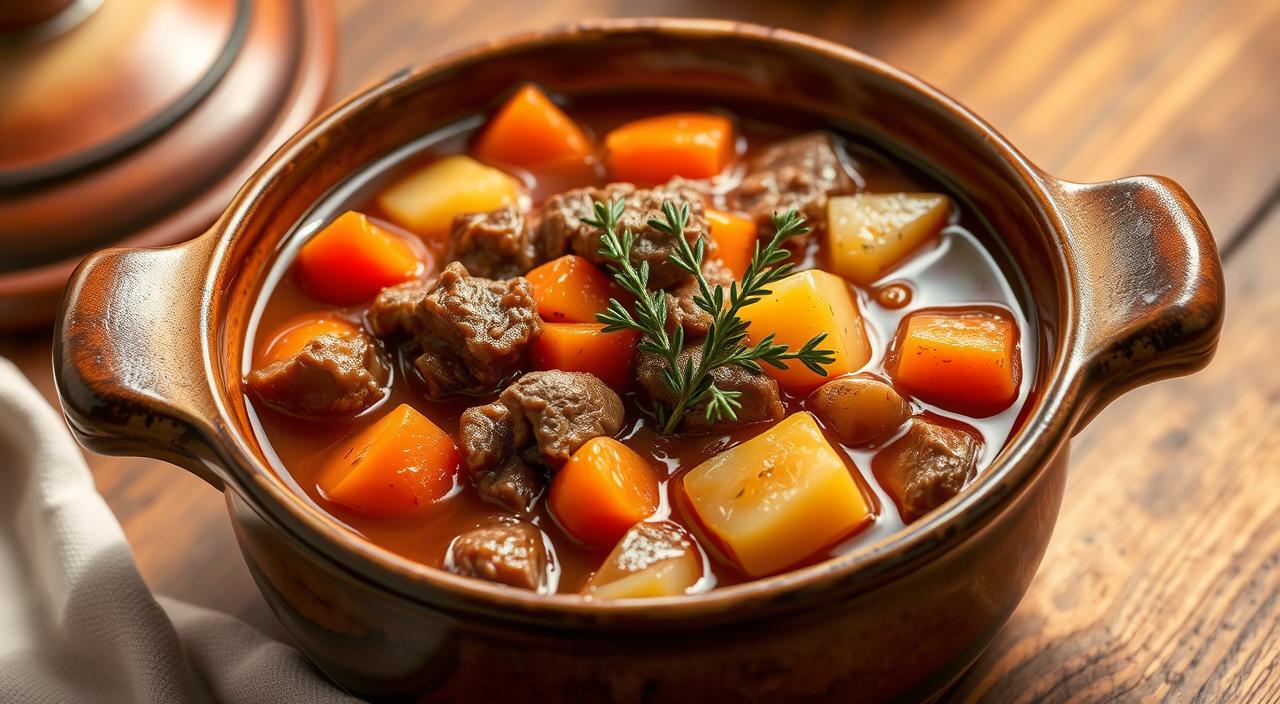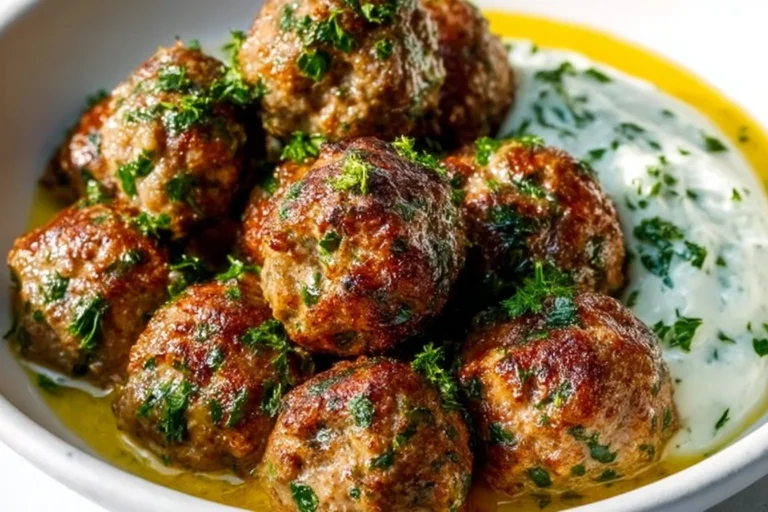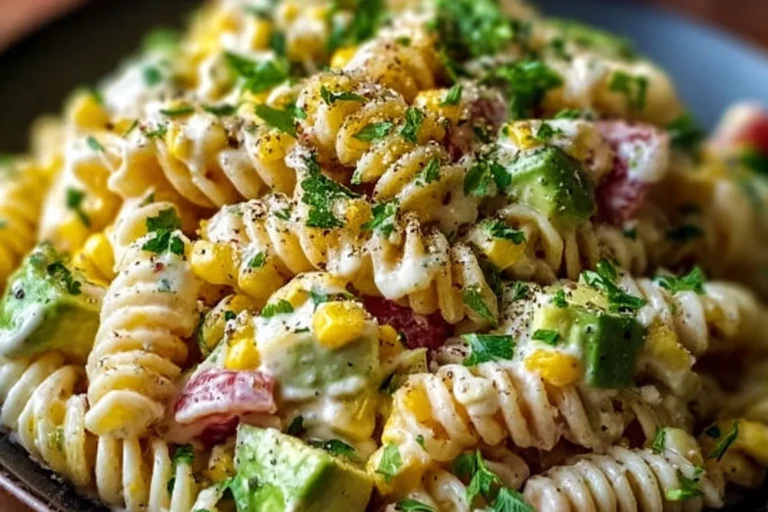Delicious Beef Stew Recipe: Easy, Hearty Meal
Beef Stew Recipe There’s nothing quite like a hearty bowl of homemade beef stew to warm your soul on a chilly evening. This classic comfort food brings together tender meat chunks and seasonal vegetables in a rich, flavorful broth. It feels like a hug in a bowl.
We’ve crafted this guide to help you create the perfect pot of goodness. Your family will gather around the table with eager anticipation. The wonderful aroma that fills your kitchen as it simmers is almost as rewarding as the first delicious spoonful.
Whether you’re cooking for a quiet family dinner or hosting friends on a cold winter night, this recipe delivers comfort in every bite. Our step-by-step instructions make the process simple, even if you’re new to creating this traditional dish.
From selecting the ideal cuts of meat to mastering the slow-cooking technique, we’ll share all our secrets for a memorable meal. The beauty of this dish lies in its simplicity. Humble ingredients transform into something truly special with just a little time and care.
Key Takeaways
- Perfect comfort food for cold weather days
- Combines tender meat with seasonal vegetables in a rich broth
- Simple to prepare with our step-by-step instructions
- Ideal for family gatherings and special occasions
- Can be prepared ahead of time and tastes even better the next day
- Customizable with your favorite vegetables and herbs
The Comfort of a Classic Beef Stew
Classic beef stew is a comfort food loved by many. My grandmother’s kitchen was always filled with its delicious smell. It simmered for hours until the meat was so tender, it could be cut with a spoon.
This wasn’t just a meal; it was a special time for our family. It brought us together, creating memories that last forever.
Beef stew is magical. It turns simple ingredients into a dish that feels like a warm hug on a cold day. The mix of savory broth, tender beef, and hearty veggies creates a flavor that touches hearts across ages and cultures.
Why Beef Stew Is the Ultimate Comfort Food
What makes classic beef stew so comforting? It starts with the smell that fills your home. This smell promises warmth and satisfaction hours before you eat it.
The slow cooking makes tough meat tender. Each spoonful is a mix of protein, veggies, and broth. It satisfies you on many levels.
A comforting beef stew is more than food. It’s a meal that gives you protein, fiber, and carbs. It leaves you feeling full and happy.
The History Behind This Timeless Dish
Beef stew has been around for centuries. It started as a way to make tough meat edible and became a beloved tradition. It’s a culinary heritage passed down through generations.
Every culture has its own version. The French add wine to make boeuf bourguignon. The Irish use Guinness, and Hungarians add paprika to their goulash.
| Country | Stew Variation | Distinctive Ingredients | Cooking Method |
|---|---|---|---|
| France | Boeuf Bourguignon | Red wine, pearl onions, bacon | Slow braised in oven |
| Ireland | Irish Stew | Guinness, potatoes, lamb/beef | Simmered on stovetop |
| Hungary | Goulash | Paprika, caraway seeds | Slow cooked in pot |
| United States | Yankee Pot Roast | Worcestershire sauce, tomato paste | Dutch oven or slow cooker |
Beef stew connects us to our past. The slow simmering and browning of meat are techniques our ancestors used. Every time we make it, we keep a tradition alive that spans generations.
Essential Ingredients for the Perfect Beef Stew
Every delicious beef stew starts with quality ingredients. These ingredients build layers of flavor. Let’s look at the key parts that make the best beef stew recipe.
Selecting the Best Cuts of Beef
The best beef stew starts with the right meat. Not all beef is good for slow-cooking. The best cuts have fat and connective tissue that make the meat tender and flavorful.
Chuck Roast vs. Stew Meat
Choosing a whole chuck roast is better than pre-packaged “stew meat”. Chuck roast comes from the cow’s shoulder. It has the right mix of meat, fat, and connective tissue. Cutting it yourself lets you:
- Control the size of meat chunks for even cooking
- Remove excess fat while keeping the marbling that adds flavor
- Ensure all pieces are from the same cut for consistent texture
Stew meat from the store can have different textures and cooking times. This can make your dish uneven.
Quality Indicators to Look For
When picking beef for your stew, look for these key quality markers:
- Rich, bright red color (avoid meat that appears gray or brown)
- Good marbling throughout the muscle
- Minimal liquid in the packaging
- Firm texture when gently pressed
Vegetables That Create a Hearty Base
Vegetables add more than just nutrition to your stew. They bring flavors, textures, and thickening. Onions, carrots, and potatoes are the classic trio.
Onions become sweet when caramelized, adding depth. Yellow or white onions are best for their sweetness and savory taste.
Carrots add sweetness and color. Choose firm, bright orange carrots for the best flavor.
Potatoes thicken the stew and absorb flavors. Yukon golds or red potatoes keep their shape better than russets.
Adding these vegetables can enhance your stew’s flavor:
- Celery for its aromatic qualities
- Parsnips for sweet, earthy notes
- Mushrooms for umami richness
- Peas (added near the end) for bright color and freshness
Herbs and Seasonings for Maximum Flavor
The right herbs and seasonings make a simple stew unforgettable. Traditional herbs include:
- Bay leaves – Add subtle depth and complexity
- Thyme – Provides earthy, slightly floral notes
- Rosemary – Contributes piney, aromatic qualities
Garlic is key—use fresh cloves for the best taste. Tomato paste adds richness and thickens the stew. It also adds acidity that balances the flavors.
For the broth, beef broth is the base. But add complexity with:
- A splash of red wine (like Cabernet or Merlot)
- A tablespoon of Worcestershire sauce for umami depth
- A teaspoon of Dijon mustard for subtle tanginess
Remember to add salt and black pepper gradually. This builds a complex flavor in your stew.
Equipment You’ll Need
Before we start our easy beef stew recipe, let’s look at the key equipment. The right tools make cooking smoother and improve your stew’s taste and texture.
Pot Options: Dutch Oven vs. Slow Cooker
You have two great choices for cooking vessels. A heavy Dutch oven is best for stovetop or oven cooking. These pots heat evenly and keep heat well.
Dutch ovens are great for browning meat, which adds flavor. Their tight lids keep moisture in during simmering. They’re also good for moving from stovetop to oven.
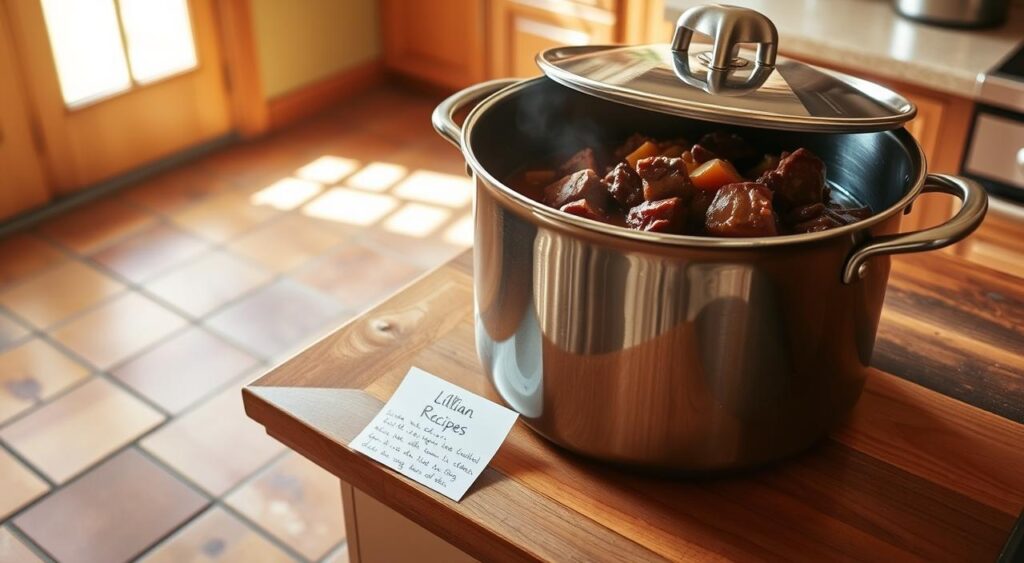
A slow cooker is perfect for busy cooks. Brown the meat first, then cook it in the slow cooker. This method lets you cook while you’re away. Most slow cookers have different heat settings.
Other Essential Tools
Other tools can make your stew better. A quality chef’s knife is key for cutting meat and veggies evenly. This ensures your stew cooks well.
Wooden cutting boards are great for prep without dulling knives. Use separate boards for meat and veggies to avoid contamination.
A sturdy wooden spoon or silicone spatula is best for stirring. It helps get all the flavorful browned bits from the pot. These bits add a lot of flavor to your stew.
Accurate measuring cups and spoons are important for liquids and seasonings. A good ladle makes serving easy and helps control portions.
Preparing Your Ingredients
Creating a perfect beef stew starts with how you prepare your ingredients. It’s important to prepare each part well. This ensures even cooking and balanced flavors in your homemade beef stew. Let’s look at the key steps to get you started.
Cutting and Trimming the Beef
The beef in your traditional beef stew needs special care. Start by removing excess fat and the silver skin from your beef chunks. While some fat is good, too much makes the stew greasy.
Cut your beef into cubes that are 1 to 1½ inches in size. This size is important for even cooking. Too small and it dries out, too big and it stays tough.
Before seasoning, dry the meat with paper towels. This helps it brown better, which is key for flavor. A good browned piece of meat is the base of a great stew.
Vegetable Preparation Techniques
Vegetables should be cut to the same size as the meat. Cut carrots and celery into ½ to ¾ inch pieces. This size cooks well without losing shape.
Potatoes can be a bit larger, about 1 inch. Onions should be medium diced so they melt into the stew. This adds flavor without being too noticeable.
Root vegetables like turnips or parsnips are treated like potatoes. Mushrooms are quartered or halved, depending on size. Fresh herbs are chopped if adding directly, or left on stems for herb bundles.
Measuring and Organizing Your Ingredients
The French method of “mise en place” is great for traditional beef stew. It means having everything ready before you start. This prevents forgetting ingredients and makes cooking smoother.
Measure your liquids and have your herb bundles ready. Keep all seasonings at hand. Arrange ingredients in the order you’ll use them. This makes cooking easier and more enjoyable.
Use small bowls for spices and herbs, and larger bowls for vegetables. This organization makes a complex dish easier to manage.
Our Classic Beef Stew Recipe Step-by-Step
Making the best beef stew recipe needs careful technique. We’ll show you how in our step-by-step guide. The secret to a great stew is not just in the ingredients but in how you cook them. Let’s break down this classic dish into easy steps for delicious results every time.
Step 1: Browning the Meat Properly
The first step in any great beef stew is browning the meat. This step, called the Maillard reaction, adds deep flavors to your dish. Start by drying your beef chunks with paper towels—moisture hinders good browning.
Temperature and Timing Tips
Heat your Dutch oven over medium-high heat until it’s hot. Then, add a tablespoon of oil like vegetable or grapeseed. The oil should shimmer but not smoke. Add beef in batches, giving each piece space—overcrowding steams instead of browns.
Let each piece get a deep brown crust before turning, usually 2-3 minutes per side. Patience is key here; those extra minutes add flavors that last through your stew.
Avoiding Common Mistakes
Don’t stir the meat too much. Let it sit until it naturally releases from the pan. If you have to force it, it’s not ready to turn. Also, avoid using too high heat, which can burn the outside while leaving the inside raw.
Once all meat is browned, move it to a plate and set it aside. Don’t wash that pot! The browned bits stuck to the bottom are flavor gold for your stew.
Step 2: Building the Flavor Base
With your meat browned and set aside, it’s time to build the aromatic foundation. This step turns simple ingredients into something extraordinary.
Sautéing Aromatics
Add diced onions to the same pot with all those flavorful browned bits still clinging to the bottom. Cook them over medium heat until they soften and turn translucent, about 3-4 minutes. Next, add minced garlic and cook for just 30 seconds—garlic burns easily and becomes bitter.
Some recipes call for adding carrots and celery at this stage, but we prefer adding them later so they maintain their texture. The vegetables will release moisture that helps loosen the fond from the bottom of the pot—a natural start to deglazing.
Deglazing the Pot
To complete the deglazing process, add a small amount of liquid to the hot pot. For the best beef stew recipe, use red wine or beef broth. Pour about ½ cup into the pot and immediately scrape the bottom with a wooden spoon to dissolve all those flavor-packed browned bits.
This step incorporates all that wonderful caramelized flavor back into your stew. Let the liquid reduce slightly before moving to the next step, concentrating the flavors even further.
Step 3: Adding Liquids and Seasonings
Now it’s time to bring everything together by adding the remaining liquids and seasonings that will transform your ingredients into a cohesive stew.
Liquid Ratios and Options
Return the browned meat to the pot along with any accumulated juices. Add enough beef broth to cover the meat by about an inch—typically 4-6 cups depending on your pot size. For enhanced flavor, replace up to a cup of the broth with red wine or dark beer.
If you’re using tomato paste (which we recommend for depth and richness), add 2-3 tablespoons now and stir well to incorporate. Some cooks also add a tablespoon of Worcestershire sauce for an umami boost.
Seasoning Techniques
Create a simple herb bundle by tying together a few sprigs of thyme, rosemary, and a couple of bay leaves with kitchen twine. This “bouquet garni” infuses flavor during cooking but can be easily removed before serving.
Season with salt and freshly ground black pepper, but be conservative—you can always add more later. Remember that as the stew reduces, flavors will concentrate. Add any additional spices like paprika or a pinch of cloves now, as they need time to meld with the other ingredients.
Step 4: Simmering to Perfection
The final step in our beef stew recipe is perhaps the most important—allowing time for all the flavors to develop and the meat to become tender through a slow, gentle simmer.
Temperature Control
Bring the mixture to a boil, then immediately reduce to a gentle simmer. You should see occasional small bubbles breaking the surface, not a rolling boil. Cover the pot partially, allowing some steam to escape and the sauce to reduce slightly.
For a Dutch oven on the stovetop, this usually means low heat. If using the oven method (which provides more consistent heat), 325°F (163°C) is ideal. At this point, you can add your chunky vegetables like carrots, potatoes, and celery.
Knowing When It’s Done
Your stew will need about 1.5-2 hours of simmering before adding vegetables, and another 30-45 minutes after. Patience yields the best results—rushing this step will leave you with tough meat and underdeveloped flavors.
You’ll know the stew is done when the meat is fork-tender—it should offer little resistance when pierced. The vegetables should be cooked through but still hold their shape, and the sauce should have thickened to coat the back of a spoon.
If you prefer a thicker stew, you can create a slurry with 1 tablespoon of cornstarch mixed with 2 tablespoons of cold water. Stir this into the simmering stew during the last 15 minutes of cooking.
Slow Cooker and Instant Pot Beef Stew Recipes
Beef stew meets modern convenience with slow cooker and Instant Pot recipes. These appliances make it easy to enjoy a hearty, flavorful beef stew recipe even on busy days. Choose the “set it and forget it” slow cooker or the speed of an Instant Pot. Both methods keep the delicious qualities of traditional beef stew.
Adapting the Recipe for a Slow Cooker
The slow cooker is perfect for beef stew. It cooks low and slow, making tough meat tender. This method is like the traditional slow-simmering that makes beef stew special.
While you could just dump everything in the slow cooker, we strongly recommend extra steps for better flavor. A little extra effort at the start makes a big difference.
Prep Differences for Slow Cooking
Brown your beef chunks in a skillet before adding them to the slow cooker. This step creates deep, rich flavors that slow cookers can’t achieve alone.
Also, sauté your onions, garlic, and other aromatics in the same pan. Scrape up all the flavorful brown bits from the meat. This makes your slow cooker beef stew exceptional.
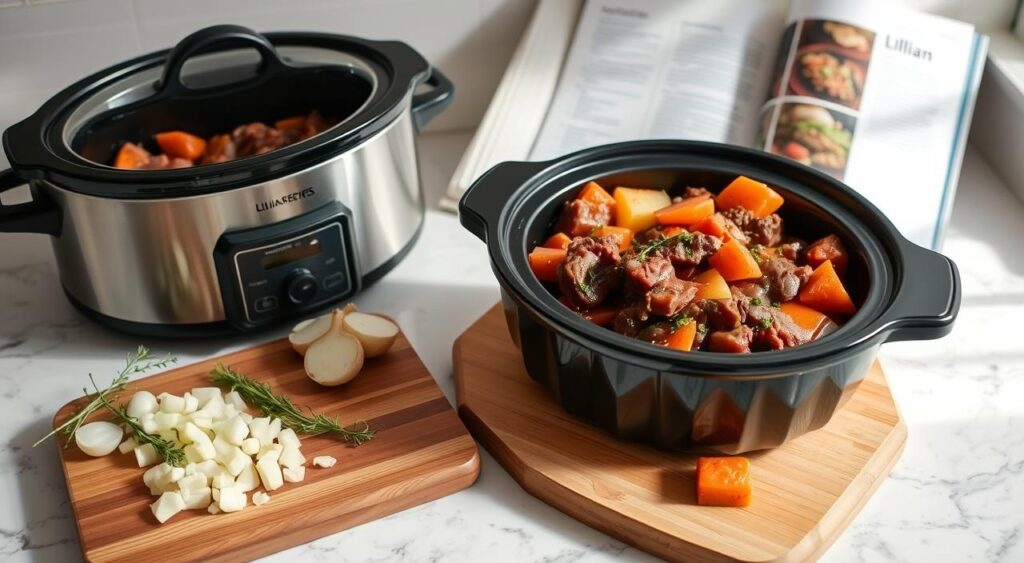
When adding everything to your slow cooker, reduce the liquid by 25-30% compared to stovetop recipes. Slow cookers hold moisture well, and too much liquid makes the stew watery.
Put harder vegetables like carrots and potatoes at the bottom of the cooker. Place your browned meat on top for even cooking.
Timing and Settings Guide
Cook your beef stew on the LOW setting for 7-8 hours for the most tender results. This slow heat breaks down collagen in the meat, making it tender.
If you’re short on time, the HIGH setting for 4-5 hours works too. But the meat might not be as tender. Don’t lift the lid during cooking—each peek releases heat and extends cooking time.
Add quick-cooking vegetables like peas or green beans in the last 30 minutes. This prevents them from becoming mushy. Taste and adjust seasonings during this time, as flavors concentrate.
Instant Pot Beef Stew: Faster Results
The Instant Pot is great for quick beef stew. It cooks fast, making tender, flavorful results in about an hour. This is perfect for last-minute dinner plans.
The Instant Pot is versatile. You can brown meat, sauté vegetables, and pressure cook all in one pot. This makes it a one-pot meal with easy cleanup.
Pressure Cooking Settings
Start by browning your meat in batches using the SAUTÉ function. Then sauté your aromatics in the same pot. Deglaze with a splash of broth or wine to capture all the flavorful bits.
Add your remaining ingredients, secure the lid, and set the valve to SEALING. For tender beef, choose HIGH PRESSURE for 35 minutes with 1½-inch chuck roast pieces.
Cooking time may vary based on meat size. Larger chunks need longer cooking times. Experiment to find your perfect timing.
Natural vs. Quick Release Methods
After cooking, you have two pressure release options. For tender results, we highly recommend the natural release method for 10-15 minutes before quick release.
Natural release allows meat fibers to relax and reabsorb juices. This makes the meat tender. Quick release can toughen and dry out the meat.
“The natural release method is like giving your stew a little rest after cooking. This patience pays off with meat that practically melts in your mouth.”
If your stew is too thin after pressure cooking, use the SAUTÉ function again. Simmer with the lid off for 5-10 minutes. This reduces liquid and concentrates flavors.
Whether you prefer the slow cooker for convenience or the Instant Pot for speed, these recipes offer all the comfort and flavor you crave. They require less effort and time.
Troubleshooting Common Beef Stew Problems
Making the perfect beef stew can be tricky, even for experienced cooks. Knowing how to fix common problems can save your meal and improve your cooking skills. We’ve gathered solutions to help you make that perfect homemade beef stew every time.
Fixing Tough Meat Issues
Tough meat is a common problem when making beef stew. If your beef chunks are still chewy, don’t worry! The solution is usually simple: more time.
Unlike many proteins, stew meat needs enough time for the collagen to break down. This makes the meat tender and delicious.
If your meat is still tough after the recommended cooking time, try these fixes:
- Transfer the stew to a lower temperature (275°F in the oven or low on the stovetop)
- Continue cooking for an additional 30-60 minutes, checking periodically
- Add a splash of broth if needed to prevent drying out
For future reference, tough meat often comes from not cooking it long enough or using a lean cut. Chuck roast and brisket are best for tender results.
Solutions for Thin or Thick Gravy
The gravy in your stew might need adjusting. If it’s too watery, you have several options:
- Cornstarch slurry: Mix 1-2 tablespoons of cornstarch with cold water until smooth, then stir into the simmering stew
- Potato mash method: Mash some of the cooked potatoes against the side of the pot and stir them back in
- Purée technique: Blend a cup of the stew (vegetables and liquid) and return it to the pot
If your stew is too thick, adding more broth, wine, or water is the solution. Remember to adjust the seasonings after adding liquid, as it can change the flavor.
Balancing Flavors When Something’s Off
A good beef stew needs balanced flavors. If it tastes flat or one-dimensional, it might need more seasoning. Add salt gradually, tasting after each addition to avoid over-salting.
For specific flavor issues, try these quick fixes:
- Too bland? A splash of vinegar or lemon juice can brighten flavors dramatically
- Too acidic? A small amount of sugar or honey helps balance tomato-based stews
- Lacks depth? Add umami-rich ingredients like Worcestershire sauce, soy sauce, or even a tiny bit of anchovy paste
Remember that flavors concentrate as stew reduces. It’s best to under-season initially and make final adjustments in the last 15 minutes of cooking. This ensures your beef stew has that perfect balance of rich, savory goodness.
Serving Suggestions and Pairings
Our traditional beef stew recipe is great on its own. But, adding sides and drinks makes it even better. The rich flavors of the stew are perfect for a memorable meal.
Best Side Dishes for Beef Stew
The right sides bring out the best in beef stew. Crusty bread is a classic choice. It’s amazing for soaking up the stew’s gravy.
For a heartier option, try serving the stew over:
- Buttered egg noodles
- Creamy mashed potatoes
- Smooth polenta
To cut the richness, add something fresh. A simple green salad or steamed green beans are great choices. They add nutrition and texture.
Wine and Beverage Pairings
The right drink can make your stew even better. For wine, medium to full-bodied reds pair well with the stew’s flavors.
Our top wine picks are:
- Cabernet Sauvignon: Its bold tannins match the stew’s richness
- Merlot: Soft tannins with plum and cherry notes
- Syrah/Shiraz: Peppery notes that enhance the savory flavors
- Côtes du Rhône: A balanced blend that complements the stew
For white wine, try a full-bodied Chardonnay. Beer fans might like a malty brown ale or stout. These drinks echo the stew’s caramelized flavors.
Non-alcoholic options include robust black tea, apple cider, or high-quality grape juice. They offer complementary flavors.
Storage and Reheating Tips
Beef stew often tastes better the next day. Let it cool completely before storing in airtight containers.
In the fridge, it stays good for 3-4 days. Freeze it in portions for up to 3 months. Leave space for expansion.
To reheat, use the stovetop over medium-low heat. Stir occasionally until hot. If it’s too thick, add a bit of beef broth. For frozen stew, thaw in the fridge before reheating.
Conclusion: Mastering the Art of Homemade Beef Stew
Making a classic beef stew is more about tradition than strict rules. It’s about turning simple ingredients into something amazing with patience and care.
We’ve covered every step of making this beloved dish. From choosing the right beef to fixing common problems. The beauty of beef stew is its flexibility. You can make it in a slow cooker for busy nights or in a Dutch oven for a weekend.
Beef stew is special because of its rich flavor and the joy it brings to people. Serving a warm, hearty bowl is incredibly satisfying. It’s also a budget-friendly meal that’s great for families or meal prep.
We invite you to make this recipe your own. Maybe add a special spice or vegetable that’s yours alone. Each time you make it, you’ll get better at it, knowing just how to cook the meat and veggies.
Beef stew connects us to our cooking heritage. By mastering this recipe, you’re keeping a tradition alive in your kitchen. It’s not just about following a recipe; it’s about preserving a culinary tradition.
FAQ
What’s the best cut of beef for beef stew?
Cuts from the shoulder (chuck) or round are best. Chuck roast is our top pick. It has the right mix of connective tissue and fat for tender meat. Buying a whole chuck roast and cutting it yourself ensures better quality and size.
How long should I cook beef stew?
Cooking time is 2-3 hours for stovetop or oven. Meat needs 1.5-2 hours of simmering before adding veggies. Then, add 30-45 minutes for veggies to cook. Slow cookers take 7-8 hours on low or 4-5 hours on high. Instant Pots cook in about 35 minutes with a 10-15 minute natural release. The stew is ready when meat is tender and veggies are cooked but still firm.
Why is my beef stew meat tough?
Tough meat means it needs more cooking. Stew meat gets tender as it cooks longer. If it’s still tough, cook it for another 30-60 minutes. Choose chuck roast or another well-marbled cut for better results.
How can I thicken my beef stew if it’s too watery?
To thicken a watery stew, make a slurry with cornstarch or flour and cold water. Stir this into the stew. You can also mash cooked potatoes against the pot and stir them back in. Or, purée a cup of the stew and return it to the pot for a thick gravy.
Can I make beef stew ahead of time?
Yes! Beef stew tastes better the next day. Make it up to 3 days ahead and store it in the fridge. Freeze it for up to 3 months. Reheat it gently over medium-low heat, adding broth if needed.
What vegetables work best in beef stew?
Onions, carrots, and potatoes are great. They add sweetness and color. Celery, parsnips, turnips, and mushrooms are also good. Add peas or green beans last to keep them green and firm.
Do I really need to brown the meat before making stew?
Yes, browning the meat is key for flavor. It creates complex flavors through the Maillard reaction. Brown the meat in batches to get a rich crust before cooking.
What’s the difference between beef stew and pot roast?
Beef stew has meat cut into chunks and cooked with veggies. Pot roast is a whole cut cooked with veggies and less liquid. The meat is sliced, not chunked, and the dish has more separation.
What can I serve with beef stew?
Serve it with crusty bread for the gravy. Try buttered egg noodles, mashed potatoes, or creamy polenta. Add a green salad, steamed green beans, or roasted Brussels sprouts for freshness.
Can I make beef stew in a traditional slow cooker?
Yes, beef stew works well in slow cookers. Brown the meat and sauté aromatics first. Use less liquid since slow cookers hold moisture well. Place harder veggies at the bottom and cook on low for 7-8 hours or high for 4-5 hours.

